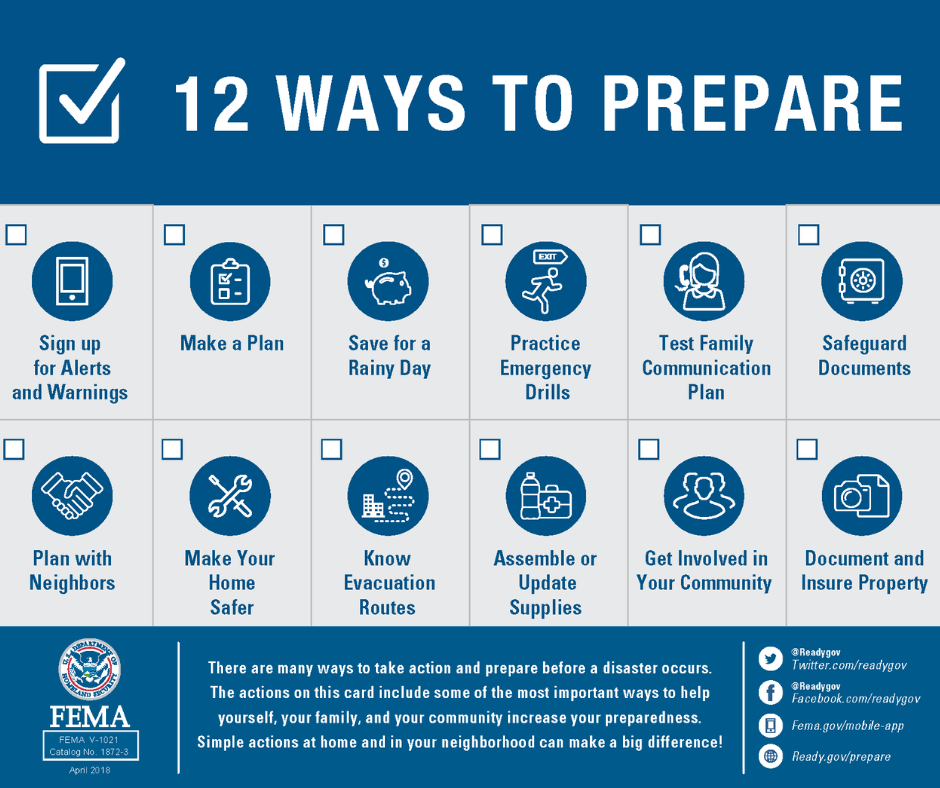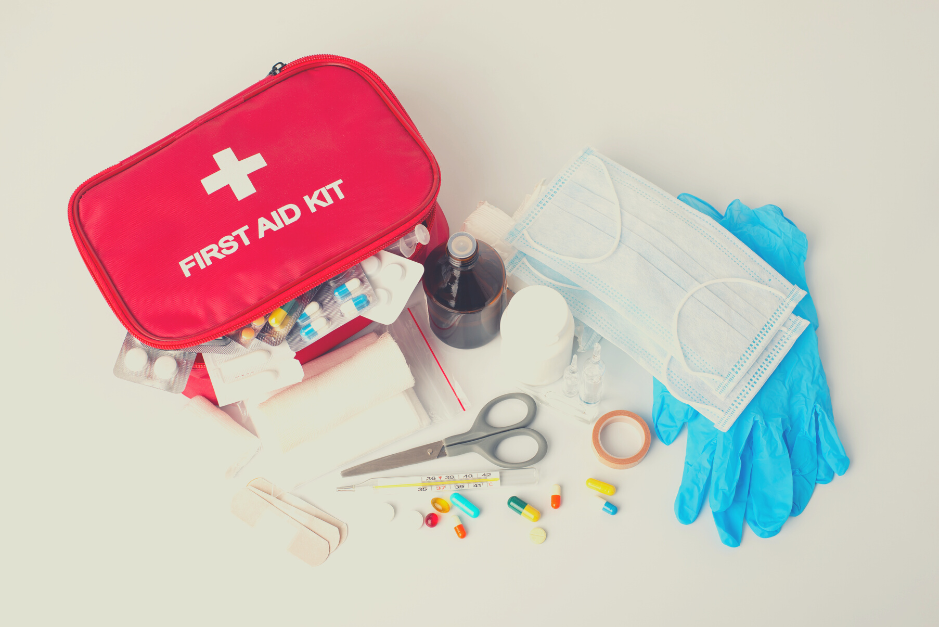When is the last time you checked the supplies in your first aid kit? Oh, wait. What first aid kit? Our safety team recommends that you own several first aid kits. One for the car, one at home, one at work and one for outdoor activities. Things get forgotten and overlooked. Band-aids tend to disappear from kits and are never replaced. Then, what happens when you are in an emergency situation and you really need supplies? They’re gone.
September is National Preparedness Month. This is a great time to think about what happens in emergencies and how to prepare your family to act quickly and intentionally. The first thing you can do this month is to make sure your first aid kits are in order.
But then, consider what else you need to be prepared for an emergency. This can differ, depending on where you are located. Do you live in a fire zone? Or a hurricane area? Perhaps you live on the beach and are in a tsunami zone. And even if you don’t live there, do you vacation in areas that might have these events? What are your plans?
There are a few steps we can take to reduce the impact of an emergent event:
- Prevention
- Mitigation
- Preparation
- Response
- Recovery
Prevention
Education is key here. At home, have a family discussion about what to do if certain things happen. Use a staff meeting to train employees on procedures for a workplace emergency. Where will employees gather? What should they take with them? Remember that practicing is key to muscle memory in an emergency. Handle the tools you’ll use, such as a fire extinguisher, a safety ladder, and know the exit strategy. PRACTICE!
Mitigation
Have a good look around your home or workplace. Eliminate fire hazards that are close to the building. Smoking near buildings also carries significant risk. Put appropriate disposal containers in visible locations to help reduce the risk of live cigarettes being thrown near the building. Check storage areas to ensure that flammable materials are appropriately stored.
Preparation
Have resources available for emergencies. Develop an emergency action plan. Check your first aid kits. Is there water available if you need to shelter in place? Flashlights, batteries and shelf-stable food supplies are good preparation tools. And education! It cannot be stressed enough that training is critical. Understanding who will do what in an emergency, matters.

Response
Once an event is underway, how your family or co-workers respond will significantly impact the final outcome. When you are well prepared, everyone has an understanding of what to do. Their actions are critical to protecting themselves, each other and infrastructure. Whether you exit a building or shelter in place, keeping people calm and informed, can prevent injury or death and save property.
Recovery
This is a good opportunity to discuss mental health and debriefing. Emergency events often create very traumatic experiences for people. Be sure that your family and co-workers are supported in dealing with such an event. Infrastructure needs can always be met later. First, take care of people.
There are many resources available to learn so much more about National Preparedness Month. Start by visiting ready.gov. You can also find helpful information through the Environmental Protection Agency and the Centers for Disease Control.

